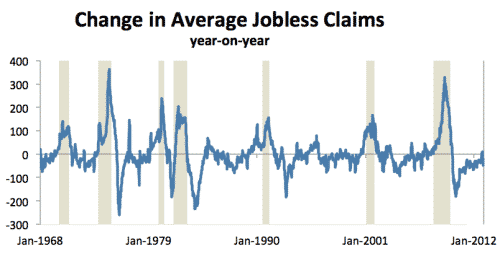US initial jobless claims are consistent with GDP growth
I don’t write about US jobless claims that much any more because I don’t see the claims number as an interesting data point unless there are large shifts to the upside or downside. But since I am now looking for signs of recession, it behoves me to pay closer attention to this metric. Unfortunately, the data don’t support recession.
Initial claims for unemployment insurance in the US came in at 330,000 for the week ended 19 Jan. Last year at this time they were 372,000. If you look at the less volatile 4-week average, the difference is less 351,750 this year versus 377,250 last year. Now these are seasonally adjusted numbers because January always sees heavy layoffs. So the unadjusted numbers are a lot higher.
Here’s the thing, these seasonal adjustments are difficult and error-prone. There’s a lot of chatter in the market right now about these numbers being misleadingly low. And I agree that they are low. For example, the unadjusted number of 436,766 compares unfavourably to last year’s 416,880. So I don’t know why the seasonally adjusted number is pulling heavily in the other direction. But, the reality is that the claims numbers are not nearly as impressive as the seasonally-adjusted headline number would suggest.
Nevertheless, the trend is clearly down. If you look at 4-week average year-on-year unadjusted claims data you see this week coming in 21,801 claims lower than the figure from one year ago. This holiday season did see the comparison turn toward higher average claims for the first time since at least November 2009 but that has since reversed out.
As you can see from the chart above, to anticipate recession, what you are looking for is not just a reversal in the trend line, which we got starting February of 2010. You actually need to see the year-on-year numbers turn unfavourable and stay that way. Every single recession since the data began in 1967 – indicated via the gray vertical lines – shows initial jobless claims spiking well above year-ago levels. I use +50,000 as the demarkation line for when the numbers are signalling recession. At -21,801, we are well below this.
Bottom line: the fundamentals of the US economy are good. They point to continued but somewhat sluggish growth. The only thing standing in the way of continued recovery is politics and the spectre of large cuts to government spending. I believe we will see large cuts. However, if we get through this period without them, that is going to be positive for growth and bullish for risk assets.

Comments are closed.